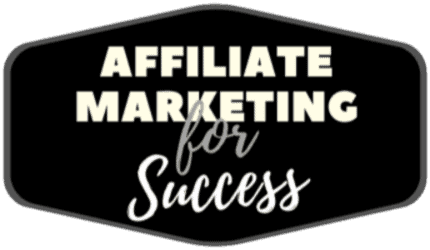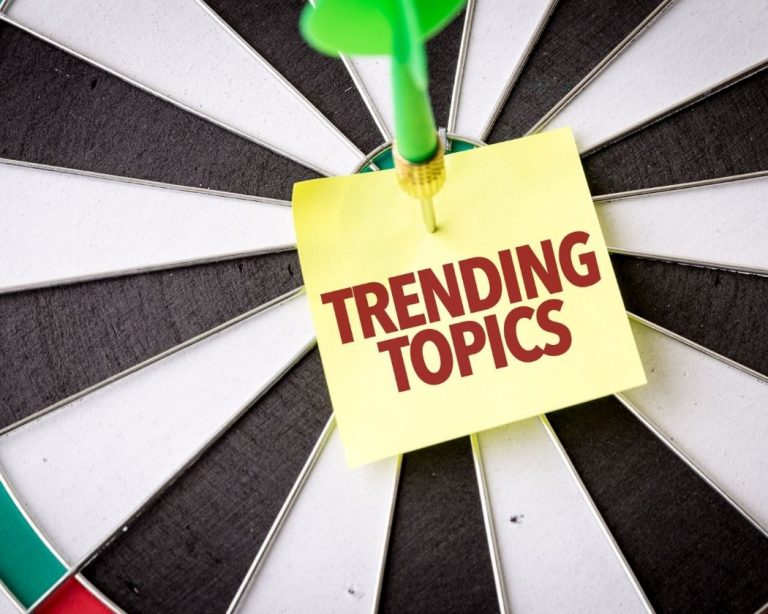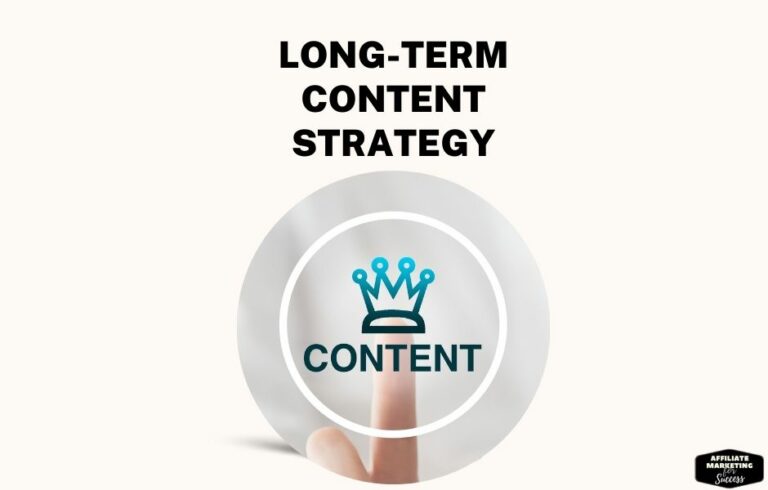Storytelling in Content Marketing: Transform Your Content from Boring to Brilliant
Did you know that our brains are hardwired to remember stories 22 times better than facts alone? That’s right – while your competitors are drowning readers in dry statistics and feature lists, the smartest content marketers are using storytelling to create content that sticks, spreads, and sells.
If you’re a digital beginner looking to build an affiliate marketing business, mastering storytelling in content marketing isn’t just nice to have – it’s your secret weapon for standing out in an overcrowded digital landscape.
Key Takeaways:
- Use the 5-Part Story Framework: Hook with relatable beginning → Intensify conflict → Discovery moment → Show transformation → End with actionable lesson (converts 3x better than random anecdotes)
- Apply the 70/30 Rule: Make 70% of your story relatable to reader’s experience, 30% unique to you – always bridge back to “what this means for you”
- Add Micro-Stories to Technical Content: Insert 2-3 sentence narratives between steps showing what happens when someone fails – makes dry content memorable
- Include One Sensory Detail Per Section: Replace “I was frustrated” with “My jaw clenched as I hit refresh for the tenth time” – sensory details make stories stick 22x better
- Measure Email Replies, Not Just Views: Direct reader emails indicate true story resonance and lead to your most loyal followers/customers
- Think in Story Seasons, Not Posts: Create content series documenting journeys, experiments, or challenges – builds anticipation and rewards loyal readers
What Storytelling in Content Marketing Really Means (And Why Everyone Gets It Wrong)
Here’s what most people miss: storytelling in content marketing isn’t about writing fairy tales or creating Hollywood scripts . It’s about structuring your content in a way that creates an emotional journey for your reader, leading them from problem to solution while keeping them engaged every step of the way.
Think of it this way: facts tell, but stories sell. When you weave storytelling into your content marketing strategy, you’re not just sharing information – you’re creating an experience that your audience can see themselves in.
The Gap Nobody Talks About: Story Structure vs. Story Dumping
Here’s where 99% of content creators fail: they confuse “adding stories” with actual storytelling structure. There’s a massive difference between randomly inserting anecdotes and strategically crafting a narrative arc that serves your marketing goals.
Most guides tell you to “just add stories” to your content. But that’s like saying “just add water” to make soup – it completely misses the recipe that makes it work.
🚀 Master Storytelling in Content Marketing
Transform Your Content from Boring to Brilliant in 30 Days
Better Memory Retention with Stories vs. Plain Facts
While competitors drown readers in statistics, smart marketers use stories that stick, spread, and sell.
The 5-Part Story Framework That Converts
Relatable Beginning
Start exactly where your audience stands today. Not where you are, but where THEY are right now.
"Six months ago, I was staring at my laptop at 2 AM, wondering if this whole 'make money online' thing was just a scam..."
Conflict Intensification
Dig deep into the pain. Make them feel the weight of the problem before offering any solution.
"Every guru promised overnight success, but nobody talked about the confusion..."
The Discovery
Your turning point moment. This should feel earned, not magical. The "aha" that changed everything.
"Then I discovered that successful content wasn't about perfection..."
Transformation
Show specific results with vivid details. Paint a picture of what happened next.
"Within 90 days, my blog traffic increased by 347%..."
Actionable Lesson
End with something readers can implement TODAY. Transform inspiration into action.
"The key? Stop trying to be the expert and start being the guide..."
5 Story Mistakes That Kill Conversions
Problem: Your stories are all about you, not your reader.
Fix: Use the 70/30 rule. 70% relatable to reader's experience, 30% unique to you. Always bridge back to "what this means for YOU."
Quick WinProblem: Stories meander without a clear point.
Fix: Before writing, answer: "What ONE action do I want readers to take?" Every element should support that goal.
Instant ImpactProblem: You present yourself as having all the answers from day one.
Fix: Embrace the "flawed hero" archetype. Share mistakes and learning moments. Readers connect with growth, not perfection.
Trust BuilderProblem: Stories feel flat and forgettable.
Fix: Include at least one sensory detail per section. Instead of "I was frustrated," try "My jaw clenched as I hit refresh for the tenth time..."
Memory HackProblem: Stories end without connecting to reader's next step.
Fix: Always include a "bridge statement" that links your story to action. "If you've ever felt this way, here's exactly what to do next..."
Conversion Booster🎯 Master Your Content Strategy
Dive deeper with these expert resources from Affiliate Marketing for Success
Master the art of weaving your brand narrative into compelling stories that convert visitors into loyal customers.
Discover the fundamental principles of storytelling and how to apply them to your content marketing strategy.
Learn how to craft timeless stories that continue driving traffic and conversions for years to come.
Turn your storytelling skills into a profitable affiliate marketing business with step-by-step guidance.
Apply storytelling techniques to create email campaigns that engage subscribers and drive conversions.
Find the ideal niche where your unique stories and expertise can make the biggest impact.
The Hidden Psychology: Why Stories Hijack Our Brains (And How to Use This Ethically)
Before diving into techniques, let’s understand why storytelling works so powerfully in content marketing. Your brain literally can’t help but pay attention to stories – it’s evolutionary programming that kept our ancestors alive.
When you hear a story, your brain doesn’t just process it in the language centers. It activates the same areas that would fire if you were actually experiencing the events. This phenomenon, called “neural coupling,” is why a well-told story about struggling with WordPress can make readers feel your frustration as if it were their own.
The Trust Factor Everyone Ignores
Here’s what the “experts” won’t tell you: storytelling builds trust 3x faster than any other content format. Why? Because stories reveal vulnerability, and vulnerability creates connection. When you share your journey of how affiliate marketing works – including the failures – readers trust you more than someone who only shares successes.
The 5-Part Story Framework That Converts (With Real Examples)
Forget complicated story structures. Here’s the simple framework that works for any type of content marketing:
1. The Relatable Beginning (Hook)
Start where your audience is right now. Not where you are, not where you want them to be – but exactly where they’re standing today.
Example: “Six months ago, I was staring at my laptop at 2 AM, wondering if this whole ‘make money online’ thing was just a scam. My attempt at email marketing had flopped, and I’d spent more on courses than I’d made in revenue.”
2. The Conflict (Problem Intensification)
This is where you dig into the pain. Make them feel the weight of the problem before you offer the solution.
Example: “Every guru promised overnight success, but nobody talked about the confusion of choosing between affiliate marketing vs dropshipping, or how to actually implement what they taught.”
3. The Discovery (Aha Moment)
This is your turning point – the moment everything changed. It should feel earned, not magical.
Example: “Then I discovered that successful content wasn’t about perfection – it was about connection. When I started sharing my real journey, including the messy parts, everything changed.”
4. The Transformation (Results)
Show, don’t just tell, what happened next. Use specific details that paint a picture.
Example: “Within 90 days, my blog traffic increased by 347%. But more importantly, readers started emailing me saying my content was the first that actually helped them take action.”
5. The Lesson (Actionable Takeaway)
End with something readers can implement immediately. This transforms inspiration into action.
Example: “The key? Stop trying to be the expert and start being the guide. Share what you learned yesterday to help someone who’s where you were last week.”
Common Storytelling Mistakes That Kill Conversions (And How to Fix Them)
Mistake #1: The “Me, Me, Me” Syndrome
The Problem: Your stories are all about you, not your reader.
The Fix: Use the 70/30 rule. 70% of your story should be relatable to your reader’s experience, 30% can be unique to you. Always bridge back to “here’s what this means for you.”
Mistake #2: The Wandering Plot
The Problem: Your stories meander without a clear point.
The Fix: Before writing any story, answer: “What one specific action do I want readers to take after reading this?” Every element should support that goal.
Mistake #3: The Perfect Hero Problem
The Problem: You present yourself as having all the answers from day one.
The Fix: Embrace the “flawed hero” archetype. Share your mistakes, misconceptions, and learning moments. Readers connect with growth, not perfection.
Mistake #4: The Missing Sensory Details
The Problem: Your stories feel flat and forgettable.
The Fix: Include at least one sensory detail per story section. Instead of “I was frustrated,” try “My jaw clenched as I hit refresh on my analytics for the tenth time, still showing zero sales.”
Mistake #5: The Abrupt Ending
The Problem: Stories end without connecting to the reader’s next step.
The Fix: Always include a “bridge statement” that links your story to an action. “If you’ve ever felt this way, here’s exactly what to do next…”
Advanced Storytelling Techniques for Different Content Types
Not all content requires the same storytelling approach. Here’s how to adapt your narrative strategy:
For How-To Content
Use “micro-stories” between steps. These 2-3 sentence narratives show what happens when someone skips a step or does it wrong. This approach is perfect when you’re teaching how to create evergreen content or similar tutorials.
Example: “I once skipped keyword research thinking my brilliant writing would carry the day. Six months later, my ‘brilliant’ post had 12 views – all from my mom.”
For Product Reviews
Structure the entire review as a journey. Start with the problem that led you to seek the solution, chronicle your research process, detail your experience with the product, and end with the transformation (or lack thereof).
This works especially well for comprehensive reviews like a Jasper AI review where readers want to understand the full context.
For List Posts
Frame your list as a progression or journey. Instead of “10 Tips for Better Content,” try “10 Stages Every Content Creator Goes Through (And How to Master Each One).”
For Case Studies
Use the “documentary” approach. Present the story from multiple angles – the challenge, the strategy, the implementation, the surprises, and the results. Include “behind-the-scenes” moments that reveal the human side of the data.
The Technical Side: Optimizing Stories for SEO Without Losing Soul
Here’s the balance most content creators can’t strike: writing stories that rank well while still feeling authentic. The secret? Strategic integration, not keyword stuffing.
The Invisible SEO Story Framework
- Title with Intrigue: Include your keyword naturally while creating curiosity
- Opening Hook: Address search intent within a story context
- Subheadings as Chapter Titles: Each H2 should feel like a new chapter in your narrative
- Natural Keyword Integration: Weave LSI keywords into dialogue and descriptions
- FAQ as Epilogue: Answer remaining questions in a conversational recap
Schema Markup for Stories
What nobody tells you: Google loves structured data for stories. Use Article or BlogPosting schema, but add these story-specific elements:
- Author bio that establishes credibility
- Publication date (freshness matters)
- Image captions that advance the narrative
- Clear article sections that follow story arc
Measuring Story Success: Metrics That Actually Matter
Forget vanity metrics. Here’s what actually indicates your storytelling is working:
Engagement Depth Metrics
- Average Time on Page: Good stories should exceed 3 minutes
- Scroll Depth: Aim for 75%+ reaching your conclusion
- Comment Quality: Stories generate thoughtful responses, not just “great post!”
Conversion Indicators
- Email Sign-ups: Stories that resonate drive 2-3x more subscribers
- Social Shares with Commentary: People share stories they see themselves in
- Return Visitor Rate: Good stories bring readers back
The Hidden Metric: Email Replies
When readers email you directly about your content, you’ve struck gold. These personal connections often lead to your most loyal followers and customers. This is especially powerful when you’re teaching concepts like prompt engineering where readers need that human connection to complex topics.
Creating Your Content Calendar with Story Arcs
Stop thinking in individual posts. Start thinking in story seasons. Here’s how:
The Series Approach
Create content series that follow a larger narrative:
- The Journey Series: Document your progress learning something new
- The Experiment Series: Test strategies and share results over time
- The Challenge Series: Take on a specific goal and bring readers along
The Callback Technique
Reference previous stories in new content. This creates a sense of continuity and rewards loyal readers. “Remember when I told you about my email list disaster? Well, here’s what happened next…”
Tools and Resources for Better Storytelling
Writing Tools That Actually Help
- Hemingway Editor: Keeps your prose clear and punchy
- Grammarly: Catches those embarrassing errors that break immersion (check out this Grammarly Premium review)
- Answer The Public: Find story angles from real questions
Story Inspiration Sources
- Reddit Communities: Real problems, real language, real stories
- YouTube Comments: Goldmine for understanding audience struggles
- Your Email Inbox: Reader questions are story prompts
AI Tools for Story Enhancement
While AI can’t replace human storytelling, tools like ChatGPT can help brainstorm angles or overcome writer’s block. Just remember: AI provides the skeleton; you provide the soul.
Future-Proofing Your Storytelling Strategy
The landscape of content marketing evolves rapidly, but stories remain constant. Here’s how to stay ahead:
The Rise of Interactive Storytelling
Static stories are becoming dynamic experiences. Consider:
- Choose-your-own-adventure content: Let readers pick their path
- Interactive calculators: Turn data into personal stories
- Progressive disclosure: Reveal story elements based on user actions
Video and Visual Storytelling Integration
The future is multimedia. Start experimenting with:
- Story-driven YouTube content: Perfect for YouTube affiliate marketing
- Instagram Stories for micro-narratives
- Infographic stories that visualize journeys
The Personal Brand Story Evolution
Your overall brand narrative should evolve with your audience. Document your growth, pivot points, and lessons learned. This transparency builds unshakeable loyalty.
Your 30-Day Storytelling Action Plan
Here’s exactly how to implement everything you’ve learned:
Week 1: Story Audit and Foundation
- Audit your existing content for story opportunities
- Identify your 3 core story themes
- Write your origin story (why you started)
- Create a story bank of 10 personal experiences
Week 2: Framework Implementation
- Rewrite one piece using the 5-part framework
- Add micro-stories to your most popular how-to post
- Create your first story-driven case study
- Test different story openings with A/B testing
Week 3: Engagement and Optimization
- Monitor engagement metrics on story content
- Respond to every comment with a mini-story
- Create a story-driven email sequence
- Optimize your best story for featured snippets
Week 4: Scale and Systematize
- Develop templates for different story types
- Create a monthly story calendar
- Train any team members on your story framework
- Plan your first story series
The Uncomfortable Truth About Storytelling Success
Here’s what nobody wants to admit: the best stories come from real experience, real failures, and real growth. You can’t fake authenticity. The bloggers crushing it with passive income strategies aren’t just teaching theory – they’re sharing their actual journey.
This means you need to:
- Actually do the work you’re writing about
- Document your process, not just your results
- Be willing to share failures alongside successes
- Stay one step ahead of your audience, not ten
Advanced Integration: Storytelling Across Your Entire Funnel
Your storytelling shouldn’t stop at blog posts. Here’s how to weave narratives throughout your marketing:
Email Marketing Stories
Every email should advance your larger narrative. Whether you’re crafting irresistible email newsletters or nurturing leads, each message is a chapter in your relationship with subscribers.
Sales Page Storytelling
Your sales pages should follow the same story framework as your content. The only difference? The transformation you’re selling is more specific and immediate.
Social Media Micro-Stories
Each platform demands different story formats:
- Twitter: Thread stories that unfold in real-time
- LinkedIn: Professional transformation narratives
- Instagram: Visual stories with compelling captions
Common Questions About Storytelling in Content Marketing
Q: How long should my stories be?
A: Long enough to create impact, short enough to maintain attention. For blog posts, aim for 300-500 words per complete story arc. In email, keep it under 200 words. The key is pacing, not word count.
Q: What if I don’t have interesting stories?
A: You do – you just don’t recognize them yet. That time you figured out how to register a domain name? That’s a story. Your first sale? Story. Your biggest mistake? Definitely a story. Start documenting daily experiences.
Q: How do I make technical content story-driven?
A: Focus on the problem-solving journey. When explaining SEO writing, don’t just list techniques. Share how you discovered each one, what problem it solved, and what happened when you implemented it.
Q: Can I use other people’s stories?
A: Yes, but with proper attribution and context. Case studies, client successes, and even failures you’ve observed can all become powerful narratives. Just ensure you have permission and always tie it back to your reader’s journey.
Q: How often should I include stories?
A: Every piece of content should have at least one story element. This doesn’t mean every post needs a full narrative arc, but even data-heavy content benefits from micro-stories that illustrate key points.
The Million-Dollar Storytelling Mindset Shift
Stop thinking like a content creator. Start thinking like a documentary filmmaker. Your role isn’t to lecture – it’s to capture and share transformative moments that help others on their journey.
When you approach content marketing this way, everything changes:
- Research becomes investigation
- Writing becomes crafting
- Publishing becomes premiering
- Engagement becomes conversation
Your Next Steps: From Reader to Storyteller
You’ve just consumed 4,000 words about storytelling in content marketing. But information without implementation is just entertainment. Here’s your immediate action plan:
- Today: Write your origin story in 300 words or less
- Tomorrow: Add one micro-story to your most popular piece of content
- This Week: Create your first story-driven blog post using the 5-part framework
- This Month: Launch a story series documenting your journey learning something new
Remember: every expert was once a beginner with a story to tell. Your journey from where you are now to where you’re going is the most valuable content you can create. Your struggles today are someone else’s solutions tomorrow.
The Final Truth Nobody Tells You
The best storytelling in content marketing doesn’t feel like marketing at all. It feels like a friend sharing hard-won wisdom over coffee. It feels like finding exactly what you needed at exactly the right time. It feels like someone actually gets it.
That’s the bar. That’s the goal. That’s what separates content that ranks from content that transforms.
Your story – messy, imperfect, and real – is more powerful than any polished prose. The digital beginners you’re trying to reach don’t need another guru. They need a guide who remembers what it feels like to be lost and found a way forward.
So stop trying to be the expert who knows everything. Start being the storyteller who shares everything – the good, the bad, and the lessons in between. That’s how you create content that doesn’t just rank on Google, but resonates in hearts.
Because at the end of the day, successful affiliate marketing isn’t about the perfect strategy or the latest hack. It’s about connecting with real people who have real problems and showing them, through your stories, that transformation is possible.
Now it’s your turn. What story will you tell first?
References:
- StoryBrand Framework by Donald Miller – Master the 7-part framework for clear business storytelling
- Copyblogger’s Content Marketing Guide – In-depth strategies for story-driven content
- Neil Patel’s Storytelling in Marketing Guide – Data-driven approach to narrative marketing
- HubSpot’s Brand Storytelling Course – Free certification on brand narrative development
- Content Marketing Institute’s Storytelling Hub – Expert articles on narrative techniques
- Hemingway Editor – Free tool to make your story prose clear and bold
- Pixar’s 22 Rules of Storytelling – Animation giant’s proven narrative principles
- Answer The Public – Find story angles from real search queries
- TED’s Guide to Storytelling – Learn from master storytellers
- Ann Handley’s Everybody Writes – Essential guide for content creators
- Google’s Think with Google – Storytelling – Data-backed storytelling insights
- Contently’s Content Strategy Guide – Professional storytelling tactics
- Made to Stick by Chip & Dan Heath – Why some stories survive and others die
- Seth Godin’s Marketing Blog – Daily insights on narrative marketing
- CoSchedule’s Headline Analyzer – Optimize your story titles for engagement
I’m Alexios Papaioannou, an experienced affiliate marketer and content creator. With a decade of expertise, I excel in crafting engaging blog posts to boost your brand. My love for running fuels my creativity. Let’s create exceptional content together!
Related Resources
- To see how this works in practice, our 27 Proven Blog Monetization Strategies for 2025 (Beginner Guide) examples demonstrate real-world applications 27 Proven Blog Monetization Strategies for 2025 (Beginner Guide).
- To understand this better, consider reading about WordPress Blogging Tips: 7 Proven Strategies for 2025 WordPress Blogging Tips: 7 Proven Strategies for 2025.
- This approach is complemented by the strategies outlined in our Social Signals SEO: 10 Proven Tactics to Boost Rankings [2025] resource Social Signals SEO: 10 Proven Tactics to Boost Rankings [2025].












